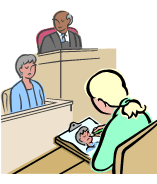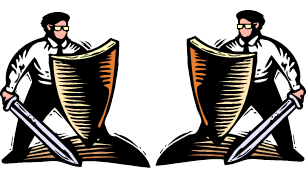vol. 6 Yesterday’s Enemies Could be Today’s Friends
- It Started From a Lawsuit
This story begins with a trial of design right infringement. Company X was very happy to have been granted a design right for a simple shape. When they searched around the market, they found products in almost the same shape as theirs circulating in the market. Eureka! ?It was so similar that it should be easy to win the trial. They were anticipating victory.

However, the defendant, Company Y, went by the book and requested a trial for invalidation, because if the right was invalidated, the case would crumble at its foundation. ?For Company X, who were well established in the market, there was nothing to worry about. They had been around for many decades as a company specialized in the field, and they had never seen any products with that shape.
- An Antique Document
I must add that, in a trial for invalidation, the defendant has to submit to the patent office a document to prove that the design of Company X had been known in the past. ?And guess what this defendant submitted to the JPO? They submitted a document of a patent granted 98 years ago in France, in which the same figure was illustrated in the drawings. The thing was practically an antique.

Certainly it looked similar, but I thought it may be something else so I looked in a French-Japanese dictionary, and found that it was the exact same product. I was at a loss. It was so straightforward that there was no way to argue against it. ?How did they find such a document? As I learned later, the president of Company Y had a friend who was a university professor specialized in that particular technical field. During a chat, the professor had told the president: “I am not sure, but I think I’ve seen goods like that sometime, somewhere・・・” That was how they managed to get that document. As a result, the design right of Company X was invalidated and they completely lost the trial which they started with such an excitement.
- After the battle is over
This story does not end here with compete defeat. ?Even though Company X lost the rights for one design, they held a number of other patent and design rights, which were licensed to over thirty companies. ?By affiliating with this group of licensees, in exchange for paying license fees, a company can have the advantage of monopolizing the market among the licensees to the exclusion of any other companies outside the group. ?Against this background, a few months after the defeat, we proposed to the president of Company X the idea of inviting company Y into their group. “Why don’t you invite that company Y to your group?”
“No way!” he said. “How the hell can we hold a meeting with the president of that damn company!” ?I could understand why the president of Company X would indignantly reject our proposal after one of their patent rights had been invalidated by Company Y. The executives of Company X reacted the same way. But I told them, “You have to accept the result as we did our best in attacking and defending the legal battle according to law. Now, it’s time to think about the future…”

I tried to convince them three different times. Over time, both the president and the executives began to understand my reasoning. “Maybe it is a good idea to partner-up with Company Y,” one of the executives wondered. “Indeed, the battle is over,” replied the president.
- Yesterday’s Enemies
Forming a partnership with Company Y means that Company X’s group can borrow the patent and/or design rights held by Company Y. ?As a result, the number of exclusive rights held by the group would increase. Thus, for the companies participating in the group, the scope of business opportunities would expand. ?For example, if they monopolized only the PC market before, now they can monopolize the cell phone market, too. As for Company X, if the sales of companies in the group increase, they can collect more license fees. As for Company Y, even though they had held several rights before, they did not know how to profit off them, in other words, they did not know how to license their rights. However, by lending their rights to the members of the group, now they can receive several million yens of license fees every year. All three parties are better off now that they have joined hands.

Our patent office not only carries on the battle of patents, but also turns yesterday’s enemies into today’s friends.
